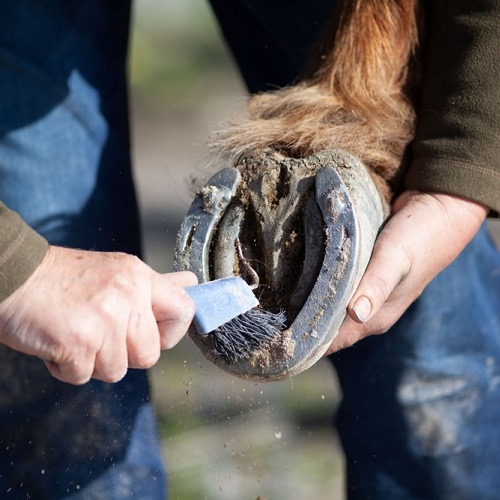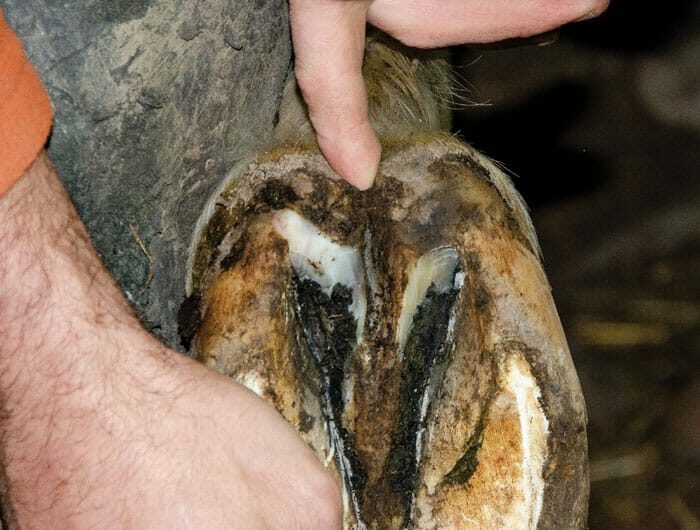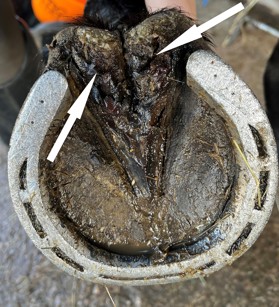
1️⃣ What happens when a rock gets stuck in a hoof?
- Small rocks, gravel, or debris can get trapped in a horse’s hoof, especially in the frog or sole area.
- If not removed, they can bruise the sole or puncture the frog, creating an entry point for bacteria.
2️⃣ How it leads to infection:

- The hoof environment is warm and moist, ideal for bacteria.
- Trapped debris can cause:
- Thrush (infection of the frog, with black, foul-smelling discharge).
- Abscesses (infection within the hoof causing sudden severe lameness, heat, and digital pulse).
3️⃣ How to clean your horse’s hooves:
✅ Pick hooves daily using a hoof pick, especially before and after riding.
✅ Clean thoroughly around the frog, heel grooves, and along the white line to remove rocks or dirt.
✅ Check for:
- Black, smelly discharge (thrush).
- Warmth, swelling in the lower leg, or sensitivity (possible abscess).
✅ If you notice a puncture wound, call your vet immediately.
4️⃣ Preventing hoof infections:

✔ Keep stalls and paddocks clean and dry.
✔ Schedule regular farrier trims (every 4–8 weeks) to maintain a healthy hoof shape that sheds rocks more easily.
✔ Use hoof hardeners or topical treatments if your horse has soft soles.
✔ Maintain a clean environment during rainy seasons to reduce mud-related issues.
🚩 When to call the vet:
- Your horse is suddenly lame or unwilling to bear weight.
- You see swelling or heat in the lower leg.
- There is foul odor or discharge from the hoof.
- You suspect a deep puncture.
If you would like, I can also prepare a simple printable barn poster on “Daily Hoof Cleaning and Infection Prevention” for your tack room, or a step-by-step hoof care schedule to keep your horse’s hooves clean and infection-free. Let me know!